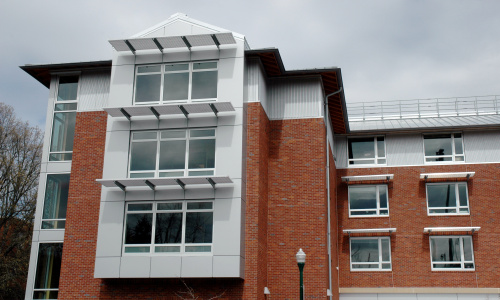Learn about housing options on college campuses including dorms, residence halls and off-campus apartments.

Photo: Thinkstock
Generally, there are three main types of college student housing: residence halls and dormitories, special interest housing, and off-campus housing. Read below to find out the benefits and drawbacks to the different types of housing options for both incoming freshmen and returning college students.
Residence Halls and Dormitories
The terms “residence hall” and “dormitory” may historically have different meanings, but in this day and age, both words are used interchangeably to describe on-campus housing. Some universities require freshmen students to live in campus dorms during their first year. In fact, according to a U.S. News & World Report study, only 20.3% of first year students lived off-campus in 2010, including commuter students.
With all of the different types of student housing available, the best resource to find out more about the intricacies of your child’s college of choice is to visit the residential life department.
Some colleges, mostly in large urban settings, are known for high percentages of first year students living off campus, like University of Massachusetts, Amherst, University of Nevada, Reno, Idaho State University, Cleveland State University, to name a few. While less than 10% of freshman students live off campus at others, such as Princeton, Harvard, MIT, and Vanderbilt.
Cost
Room and board can be expensive. At USC for example, rent plus meal plans can run up to $12,000 per year. The good news is that while this number can change depending on the college’s host city, it won’t vary nearly as much as tuition costs.
Special Interest Housing
Special interest housing is a way for students with common academic or cultural interests to live together. This type of housing can be open to first-year students or, at some schools, may be limited to upperclassmen.
There are all different types of special interest housing. Some colleges will offer only major-specific or substance-free housing, but many schools have a plethora of special interest housing options. For example, UC-Riverside has special interest housing for Humanities students, Engineering students, honors students, students who are interested in Pan-African studies, Pre-Business students, students who celebrate all gender identities and sexual orientations, transfer students, and Latino students. Special interest housing is a great way for like-minded students to live and study together.
Off-Campus Housing
College upperclassmen often have many different housing options available. Oftentimes, juniors and seniors choose to live in off-campus apartments and houses as a way to begin to explore the post-college lifestyle setting. Additionally, most schools have housing lotteries whereby upper division students are given first-choice housing before freshmen and sophomores. This can lead to some students with subpar lottery numbers choosing off-campus housing rather than undesirable on-campus alternatives. Lottery numbers are usually chosen at random within each lottery bracket.
Off-Campus Housing Costs
Apartment markets vary widely depending on the city, but oftentimes student apartments are widely available and affordable in cities with large student populations. This brings more options to students – and more responsibility as well. Students must learn about the economics of apartment living, with shared expenses like utilities, cable, and Internet.
With all of the different types of student housing available, the best resource to find out more about the intricacies of your child’s college of choice is to visit the residential life department, either online or in person.